d+Au Hijing Multiplicity Jet Bias
Motivation:
It is observed that the near-side jet peak distribution differs from central and peripheral d+Au collisions data.
Here the jet centrality difference is studied for their pT dependence in Hijing simulation
Method
Hijing simulation.
Dihadron correlations are projected on Δη for near-side (Δφ~0) and away-side (Δφ~π) separately. The near-side distribution is fitted with a Gaussian + Pedestal.
The fit parameters are: Gaussian area Y, Gaussian width σ, Pedestal C.
The centrality is determined by the number of charge particles in -2.8>η>-3.8.
The associate particles transverse momentum are 0.15-3 GeV/c. The trigger particle pT are varied.
The dihadron correlation below shown is ZYAM subtracted.
Data set:
Hijing d+Au Simulation data.
Both trigger and associated particle in |η|<1
Associate particle 0.15< pT < 3 GeV/c
Results:
1. Near-side Correlation Fit Result
Trigger pT depedence:
| 0.15<pT<0.5 | 0.5<pT<1 | 1<pT<1.5 | 1.5<pT<2 | 2<pT<2.5 | 2.5<pT<3 | 3<pT<4 | 4<pT<6 | |
| 0-20% | 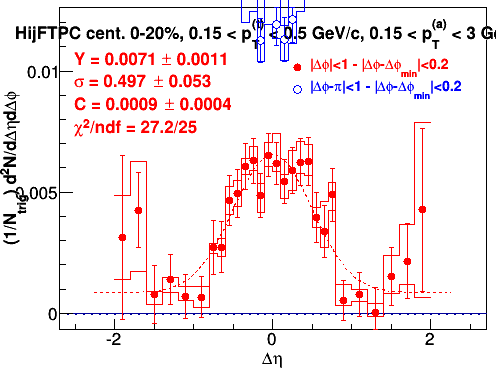 |
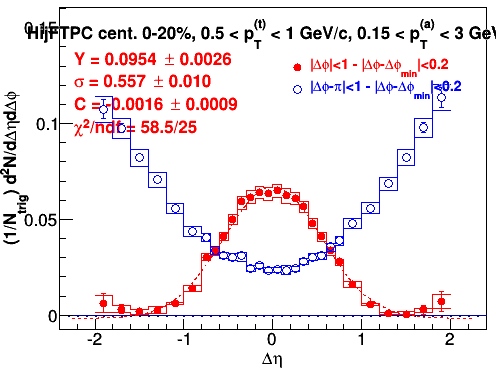 |
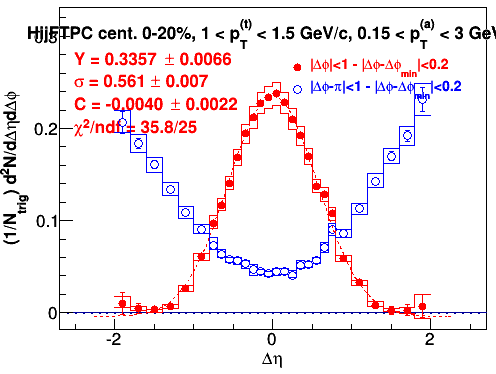 |
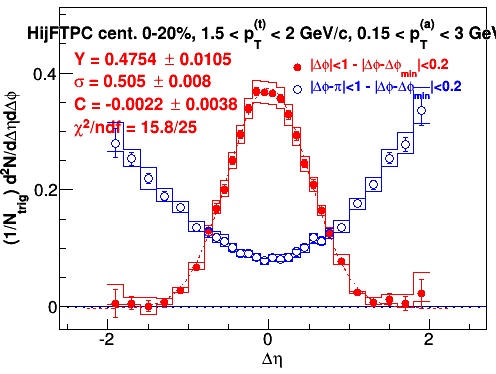 |
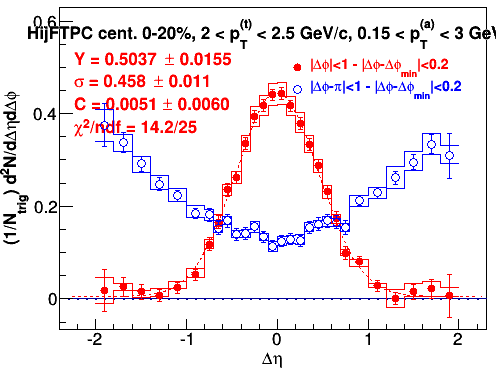 |
 |
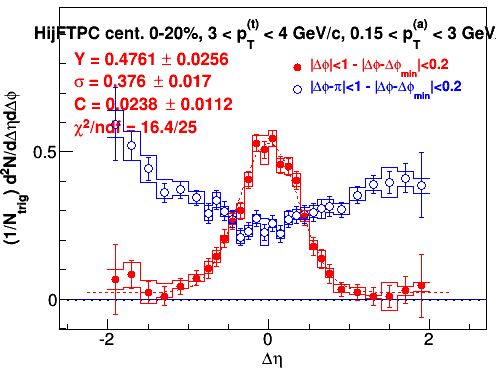 |
 |
| 40-100% | 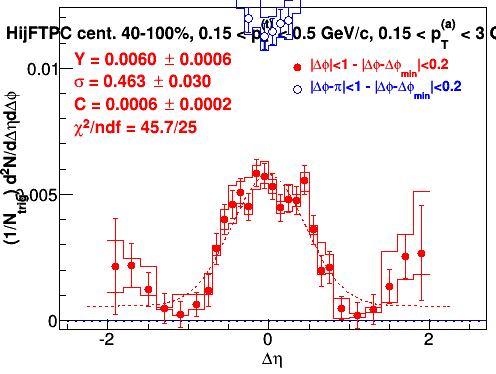 |
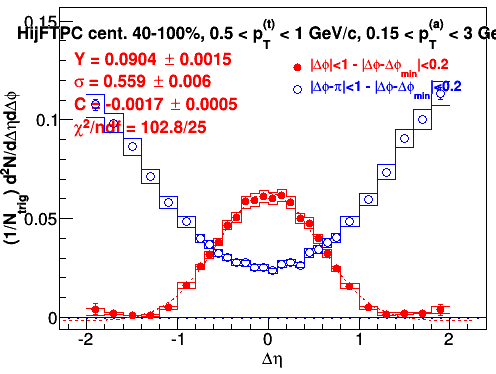 |
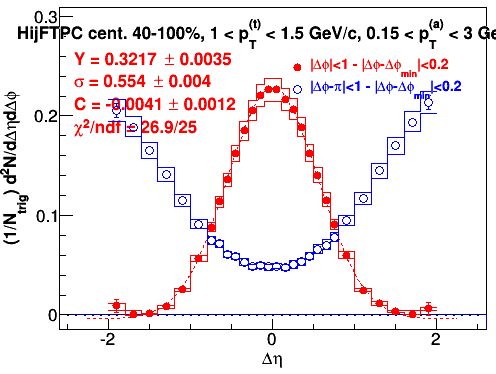 |
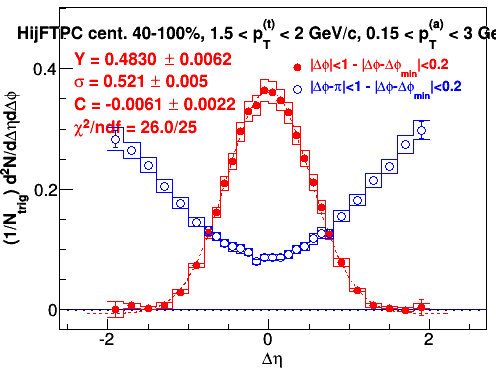 |
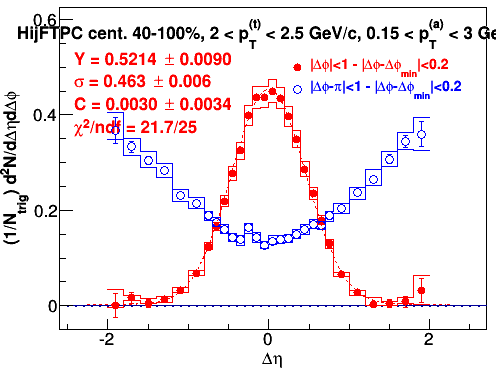 |
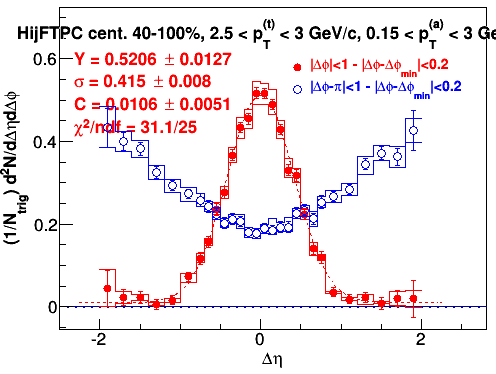 |
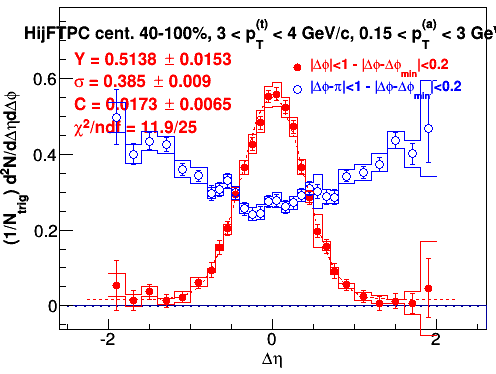 |
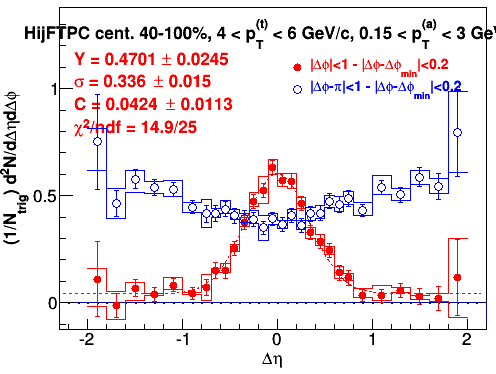 |
Note: There is a concave for away side shape. This is known in hijing. There's some effect of concave shape in real data at low pt but it's much weaker than Hijing.
2. Fit Parameter Trigger pT Depedence
| Gaussian Area | Gaussian Width | Pedestal |
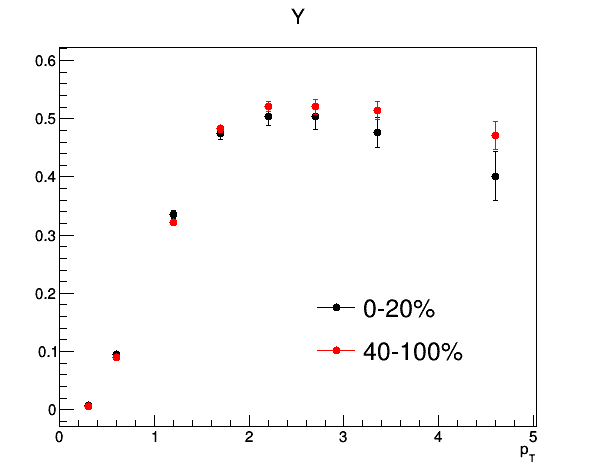 |
 |
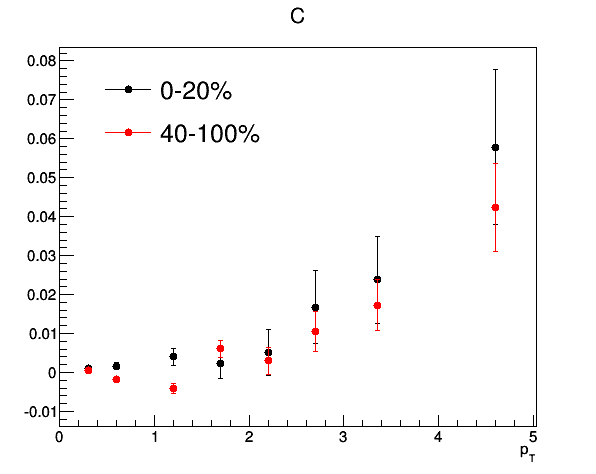 |
Ratio of central and peripheral:
 |
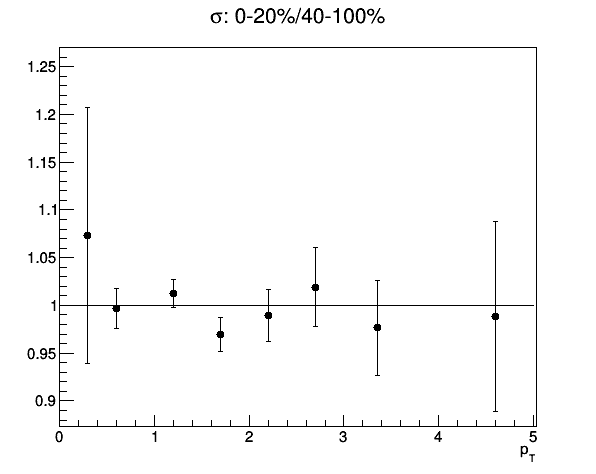 |
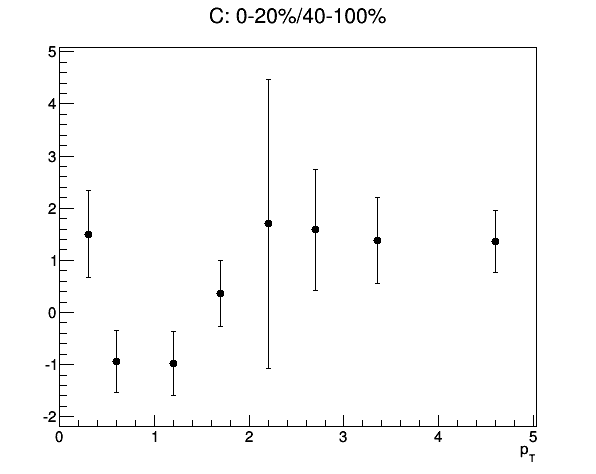 |
χ2/Ndf:
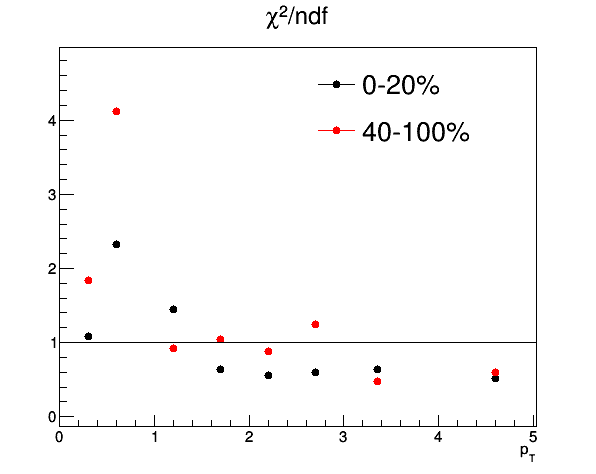
For Real Data, See drupal.star.bnl.gov/STAR/blog/yili/dau-ridge-multiplicity-jet-bias
Conclusion:
There's multiplicity bias to correlation in hijing. But the effect is much smaller than in data.
- yili's blog
- Login or register to post comments
